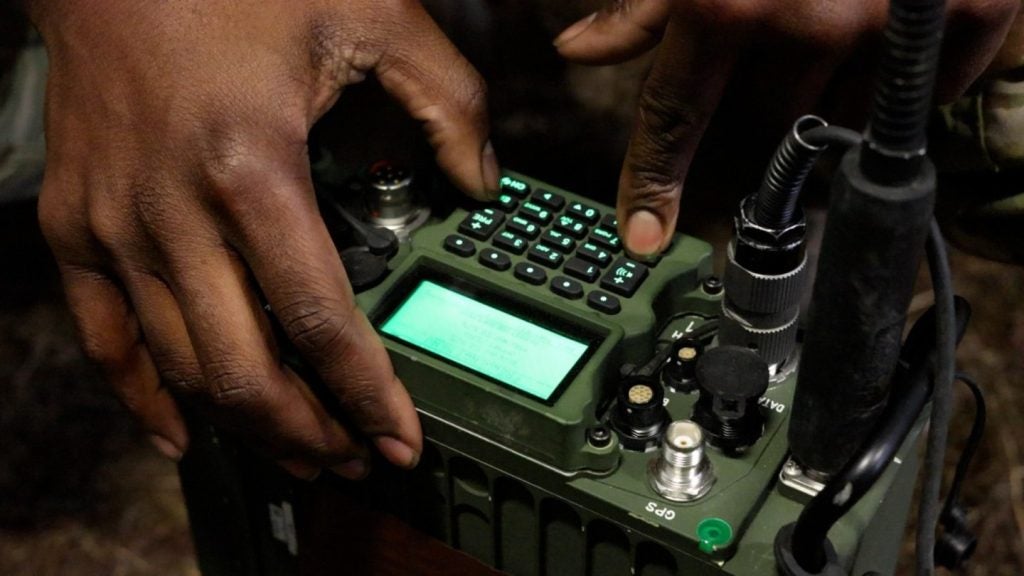
The demand for highly skilled personnel in the military is constantly increasing, particularly in today’s network-centric battlespace where cyber attacks and electronic warfare are just as important as firing missiles or shooting rifles. But an issue faced by fresh recruits and seasoned soldiers that wish to pursue specialist roles in the military is an assessment process – usually consisting of a medical screening, fitness test and written exam – that often throws up inherent biases that hinder their chosen career path.
Now the US military – through a project funded by the Defense Advanced Research Projects Agency (DARPA) – is looking at how technology and a better understanding of the human body can remove these biases from the recruitment process. The project, known as Measuring Biological Aptitude, effectively aims to improve the ways the military as a whole, as well as individual troops, can identify, measure, and track so-called “personalised biomarkers”.
Biomarkers are the measure of underlying biological processes – genetic, epigenetic, metabolomic, etc. – that can affect individual performance in a soldier, whether cognitive or physical. One of the key aims of DARPA’s Measuring Biological Aptitude programme is to “empower the warfighter” with their own biological data in order for them to achieve personal, defined career goals.
“Measuring Biological Aptitude will measure across the hierarchical layers of an individual’s underlying biological systems that convert genetic code (genotype) into observable cognitive, behavioral, and physical performance traits (phenotype),” according to DARPA documents released to organisations interested in participating in the Measuring Biological Aptitude programme.
Researchers will measure these “expression circuits” – how a genotype converts to an observable phenotype – through various layers of biological pathways, with the ultimate aim of developing technology that can track these circuits in real time and predict success in a given individual.
Re-coding performance
“Genotypes are fixed, but phenotypes are not. Biology is fundamentally adaptable, and that is the key to enabling performance improvements,” said Eric Van Gieson, who is responsible for the Measuring Biological Aptitude programme. “What we’re planning to deliver with Measuring Biological Aptitude is a set of continuously updated information that empowers individuals to track their progress throughout their careers and quickly identify what aspects of training and preparation are the most productive.”
How well do you really know your competitors?
Access the most comprehensive Company Profiles on the market, powered by GlobalData. Save hours of research. Gain competitive edge.

Thank you!
Your download email will arrive shortly
Not ready to buy yet? Download a free sample
We are confident about the unique quality of our Company Profiles. However, we want you to make the most beneficial decision for your business, so we offer a free sample that you can download by submitting the below form
By GlobalDataFirstly, it is hoped that this will raise the performance baseline for incoming recruits and remove biases in the selection process, particularly how recruits are evaluated and subsequently developed for specialist roles. Troops going through a recruitment process based on Measuring Biological Aptitude measurements – rather than traditional, externally observable traits such as physical fitness or written exams – could reveal to individuals career options that might not have been apparent before.
In addition, DARPA also sees benefits to using the Measuring Biological Aptitude approach when it comes to training, allowing soldiers to “proactively nurture the traits that are characteristic of successful performers”.
As part of Measuring Biological Aptitude, researchers will analyse samples and other data collected from high-performing troops across a number of military specialisations. Once the Measuring Biological Aptitude programme begins, DARPA will provide access to biomarker and phenotypic data from at least one pre-identified military cohort of approximately 70 individuals, as well as information about assessment and selection outcomes in that group of soldiers. It is hoped this will identify biological signatures of successful performance in each of those roles, and how it can be measured.
Real-time body awareness
Another advantage of digging deep into the body’s biological processes – and being able to measure them in real-time – is giving commanders the ability to see on the battlefield how troops are performing, something which has been termed “biological awareness” by DARPA. Having this data could allow commanders to change strategies to optimise soldier performance, as well as guide recovery and flag potential health issues after operations have taken place.
According to DARPA sources, the Measuring Biological Aptitude programme will consist of three technical areas (TAs) and is expected to last for four years with three phases broken up into an 18-month Phase 1, a 12-month Phase 2 and an 18-month Phase 3. The first phase will concentrate on expression circuits and building “the foundational capability to understand how the genetic code is manifested into a phenotypic trait that leads to success in a military specialty”.
This will include the development of a systems-level understanding of how the genome is interpreted and manifested into a performance phenotype. “Teams are encouraged to build this interpretation based on a detailed understanding of the expression circuits underlying each measured phenotype,” according to DARPA.
By the end of TA1, DARPA is keen to establish a relationship between the individual’s underlying expression circuit biomarkers and relevant phenotypes, such that a change in the biomarker is affiliated with a correlated change in performance which improves the probability of selection success and/or job performance. A second TA (TA2) will concentrate on real-time molecular target monitoring, which stipulates that teams “must build a capability that can further validate the relationship by observing and verifying the relevance of those circuits”.
This will require the development of technology that tracks expression circuits in real-time, which could then be used by soldiers in the future for performance monitoring. Phase 3 will verify and validate the findings of the first two phases.
Opening career paths or limiting choice?
Of course there are several challenges to overcome.
“Human beings are extremely complex, and although we expect to gain valuable new insights by measuring biology, we also understand that people are not locked into predetermined fates,” Van Gieson explained.
“Any breakthroughs we achieve in the Measuring Biological Aptitude programme will necessarily be used to address shortages in critical roles by expanding opportunities, not limiting them. If we can provide people with information on their unique biology, and empower them to affect and measure gains in key traits, we’ll have opened career pathways that they may not have previously considered.”






